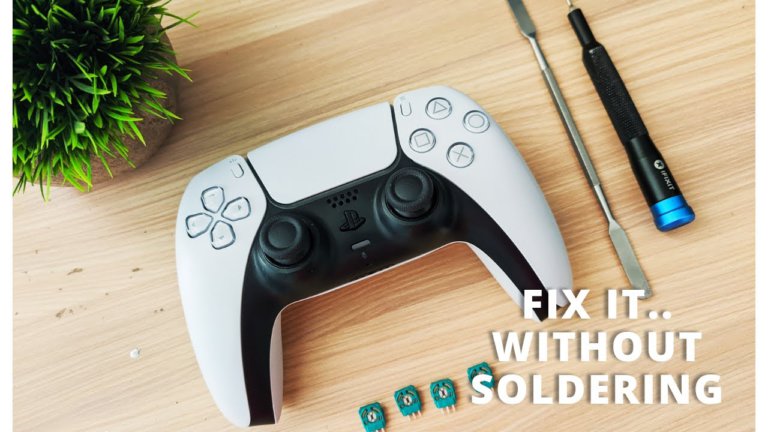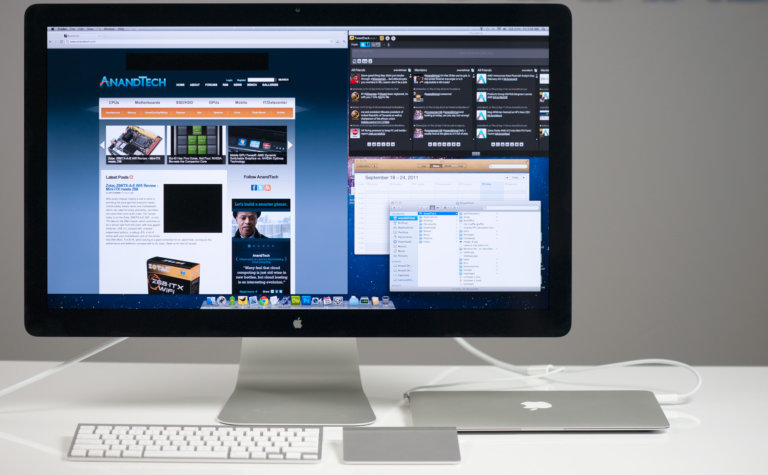How Does a Stylus Work on a Capacitive Touch Screen
This post may contain Amazon authorized links.
A stylus works on a capacitive touch screen by mimicking a finger’s touch through electrical conductivity. It interacts with the screen’s electrical field to register inputs.
When in contact with the touch screen, the stylus’s conductive tip allows for precise and accurate touch response. As technology continues to advance, capacitive touch screens have become prevalent in various devices, such as smartphones, tablets, and other touch-enabled gadgets.
A stylus enhances user interaction by offering a more precise and detailed input method compared to using fingers. This stylus’s functionality is attributed to its ability to interact with the electrical charge present on the screen’s surface, enabling users to navigate, draw, and input information with accuracy. This versatile tool serves as an extension of the user’s hand, providing a seamless and efficient touch experience on capacitive touch screens.
Introduction To Capacitive Touch Screens
A stylus works on a capacitive touch screen by mimicking the touch of a finger. It does not require any communication with the device and can be used on any device that responds to finger touch.
What Is A Capacitive Touch Screen?
A capacitive touch screen is a type of technology that allows the screen to detect touch input from a user’s fingers or a stylus. It consists of a layer of glass or a clear, conductive material that can store electrical charges. When a conductive object, like a finger or stylus, touches the screen, it disrupts the electrical fields, allowing the touch screen to register the input.
How Does A Capacitive Touch Screen Work?
A capacitive touch screen works by using the electrical properties of the human body to detect touch. The screen’s glass panel is coated with a transparent conductor and when a conductive object comes into contact with the surface, it changes the electrical charge at that specific point. The device then uses this information to determine the location and type of touch input.
Understanding Stylus Pens
A stylus pen works on a capacitive touch screen by mimicking the conductive properties of the human finger, allowing for precise interaction with the touch-sensitive display. When the stylus tip makes contact with the screen, it completes an electrical circuit, enabling the screen to recognize and respond to the input.
What Is A Stylus Pen?
A stylus pen is a tool used to interact with electronic touchscreens, mimicking the function of a finger touch.
Different Types Of Stylus Pens
Stylus pens come in different types such as passive and active styluses, each with its own unique features and functionalities.
Mechanics Of A Stylus On A Capacitive Touch Screen
A stylus on a capacitive touch screen works by mimicking the electrical properties of a human finger, enabling precise input without the need for direct skin contact. The stylus tip interacts with the screen’s electrical charge to navigate and interact with digital interfaces effectively.
Why Do Stylus Pens Work On Capacitive Touch Screens?
Stylus pens work on capacitive touch screens due to their conductive properties and ability to mimic the touch of a human finger.
The Role Of Conductivity In Stylus Functionality
Conductivity plays a crucial role in the functionality of a stylus on a capacitive touch screen, as it allows the stylus to interact with the screen’s electrical charge.
Advantages And Disadvantages Of Stylus Pens On Capacitive Touch Screens
Using a stylus on a capacitive touch screen offers precise control, mimicking finger touch with ease. However, the larger tip of a capacitive stylus can sometimes hinder accuracy compared to an active stylus. Despite this, there are innovative options like the Adonit Jot Pro with a see-through plastic disc for enhanced precision.
A stylus pen on a capacitive touch screen offers various benefits and limitations that are essential to consider. Understanding these can help users make informed decisions about the use of stylus pens for their touch screen devices.
Benefits Of Using A Stylus Pen
Stylus pens provide several advantages when used on capacitive touch screens:
- Increased precision and accuracy in drawing, writing, and selecting small objects, which can be particularly beneficial for artists, designers, and professionals who require detailed work.
- Enhanced control and comfort during extended use, as stylus pens offer a natural and ergonomic grip, reducing fatigue and increasing productivity.
- Reduction of smudges and fingerprints on the screen, leading to a cleaner and clearer display for a more enjoyable user experience.
- Ability to use the device while wearing gloves, making stylus pens ideal for cold environments or situations where direct finger contact is impractical.
- Compatibility with a wide range of touch screen devices, allowing users to seamlessly transition between different platforms and applications.
Limitations Of Stylus Pens On Capacitive Touch Screens
Despite the advantages, stylus pens also come with certain limitations when used on capacitive touch screens:
- Lack of pressure sensitivity and tilt recognition, which are essential features for professional digital artists and illustrators seeking more advanced control over their creative work.
- Dependency on the screen’s responsiveness, as certain capacitive touch screens may have varying levels of sensitivity, leading to inconsistent performance with stylus pens.
- Possible interference with palm rejection technology, causing unintended touch inputs when resting the palm on the screen while using a stylus pen, potentially disrupting the user experience.
- Potential risk of misalignment and inaccuracies, especially with larger and less precise stylus tips, which can compromise the overall user experience and workflow efficiency.
- Additional cost and maintenance, as stylus pens may require periodic replacement of tips or batteries, adding to the total ownership expenses of touch screen devices.
Choosing The Right Stylus Pen For Your Device
A stylus pen for a capacitive touch screen operates like a finger touch, making it ideal for any device that responds to touch. Unlike an active stylus, there’s no communication link between a passive stylus and the device. The accuracy of a capacitive stylus can be affected due to its large tip.
Considerations When Selecting A Stylus Pen
When it comes to selecting the right stylus pen for your device, there are a few considerations to keep in mind. First, you need to determine whether you require an active or passive stylus. Active styluses often have additional features such as pressure sensitivity and palm rejection, making them ideal for drawing and precise tasks. Passive styluses, on the other hand, function like a finger on a capacitive touch screen. Next, consider the compatibility of the stylus with your specific device. Some stylus pens are designed specifically for certain devices, such as iPads or Android smartphones. Ensure that the stylus you select is compatible with your device to ensure optimal performance.Popular Stylus Pen Options For Different Devices
For iPad users, the Best tablet pen for iPad is highly recommended. It offers a smooth and precise writing experience, making it perfect for taking notes or drawing on your tablet. Another option worth considering is the Wacom Bamboo Ink Plus Stylus, which is compatible with both iPads and Windows devices, providing a versatile solution. Android smartphone users can benefit from the Insignia Slim Stylus for Smartphones. This stylus pen is compact and lightweight, allowing for easy navigation and precise interactions on your device. If you own a Microsoft Surface device, the KECOW Active Stylus Pen offers great compatibility and versatility. It is designed specifically for Microsoft Surface devices and provides a seamless writing and drawing experience. When it comes to general use on various touch screens, the Insten Universal Fine Point Stylus is a popular choice. It works well on both capacitive and resistive touch screens, making it suitable for a wide range of devices. Remember to choose a stylus pen that suits your needs and preferences, considering factors such as compatibility, precision, and additional features. With the right stylus pen, you can enhance your touchscreen experience and unleash your creativity.Frequently Asked Questions On How Does A Stylus Work On A Capacitive Touch Screen
Do Stylus Pens Work On All Touch Screens?
A passive/capacitive stylus will work on all touch screens that respond to a finger touch. It acts just like a finger when touching the screen, so any device that recognizes finger touch will work with a stylus pen. The large tip of a capacitive stylus may slightly reduce accuracy, but there are models available with a plastic disc that ensures accuracy.
What Is A Capacitive Pen?
A capacitive pen, also known as a passive stylus, acts like a finger when touching a device screen. It does not communicate with the device and the device cannot tell the difference between a finger and a passive stylus. It may not be as accurate as an active stylus due to its large tip.
Are Capacitive Styluses Good?
Capacitive styluses are good for general use on touchscreen devices. However, they may not be as precise as active styluses due to their large tip. Nevertheless, some models, like the Adonit Jot Pro with a plastic disc, offer improved accuracy.
What Is The Difference Between Capacitive And Resistive Stylus?
Capacitive stylus mimics finger touch, while resistive works with finger, gloves, and stylus on screens.
Conclusion
A stylus enhances precision on a capacitive touch screen, offering a seamless user experience. Understanding how the stylus interacts with the screen’s electrical charge provides insight into its functionality. With the ability to mimic the human touch, a stylus allows for greater control and accuracy in digital interactions.

Mohaimenul Islam Shawon is a professional blogger and content creator. Shawon has been a full-time blogger since 2019. He is the founder and editor of his successful blog, which covers topics such as technology, games, apps, digital gadgets, and more. He has a Bachelor’s degree in Computer Science & Engineering.




